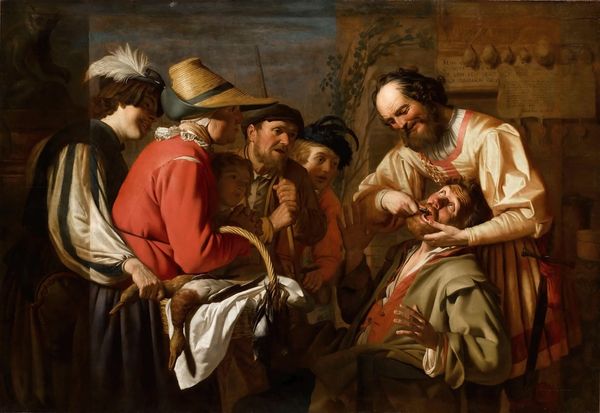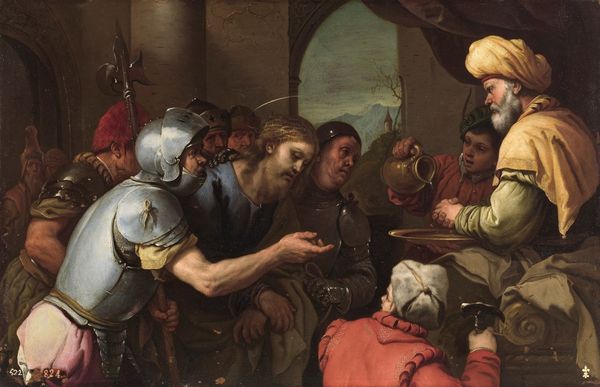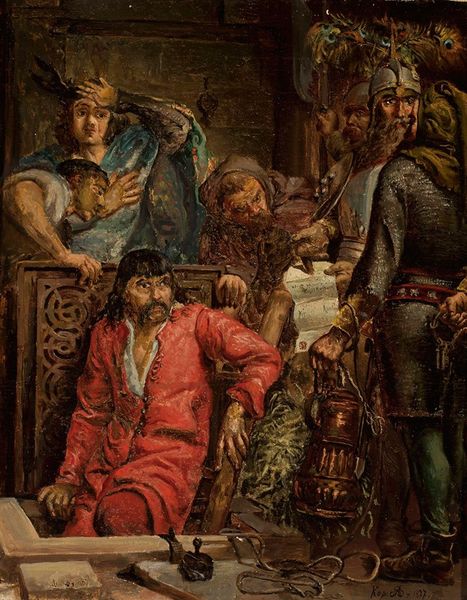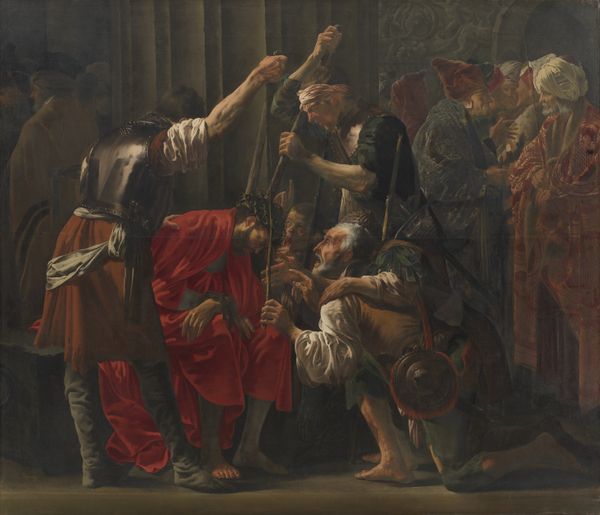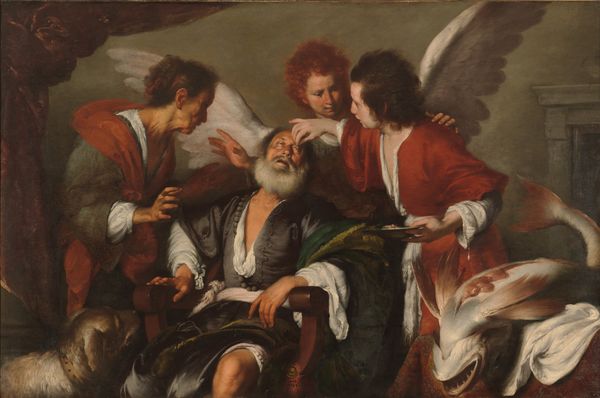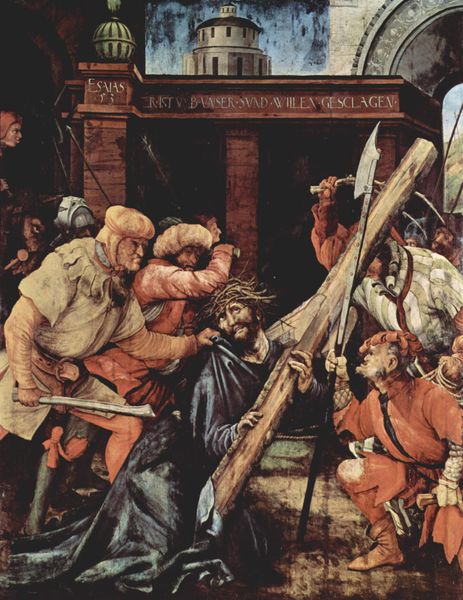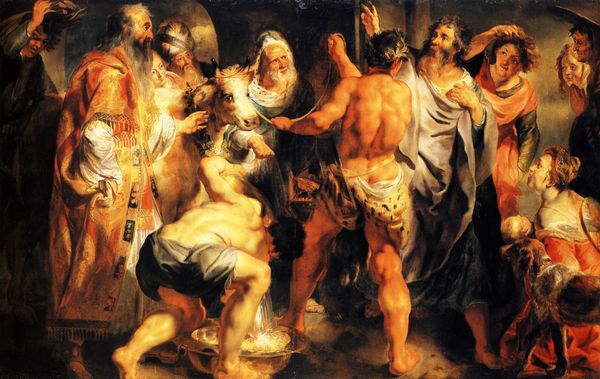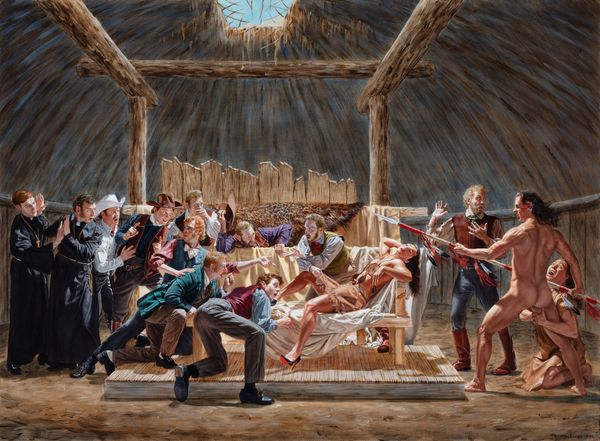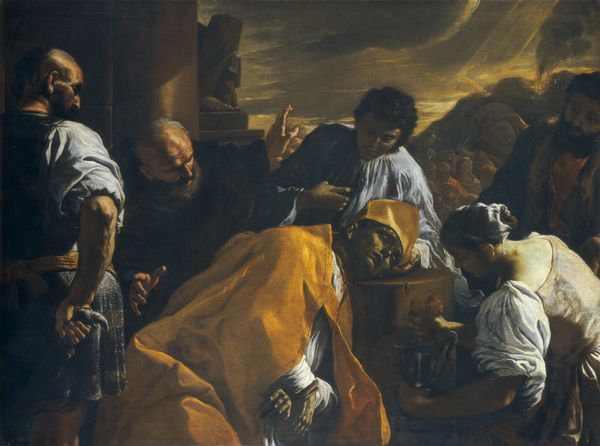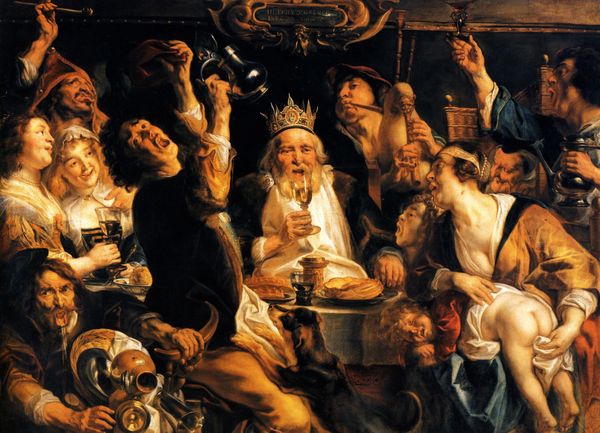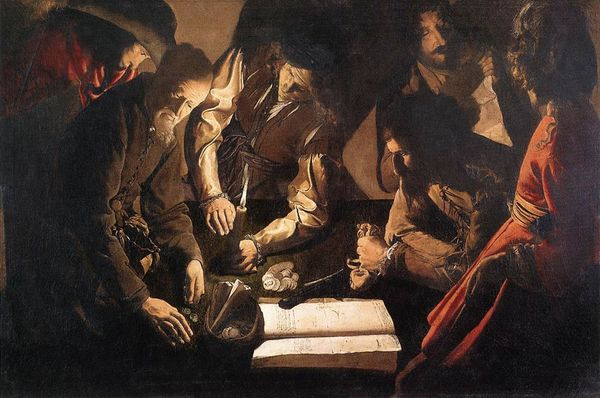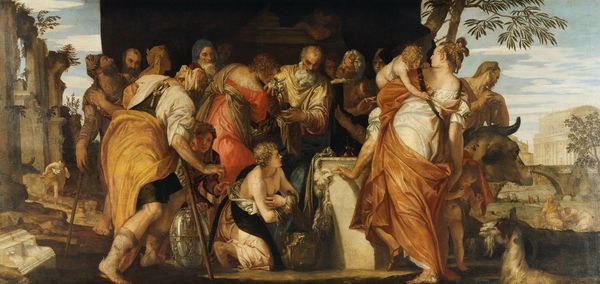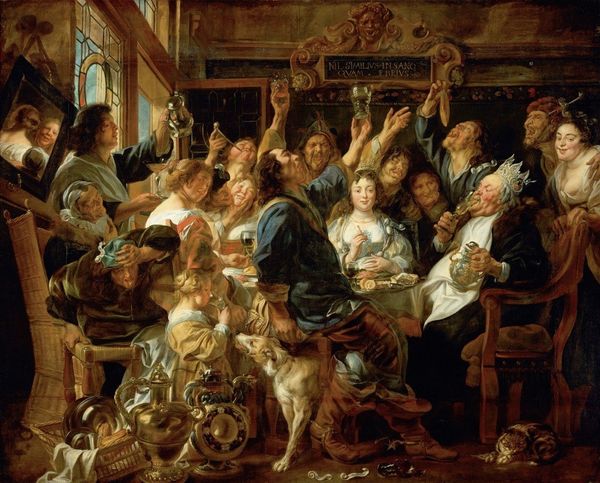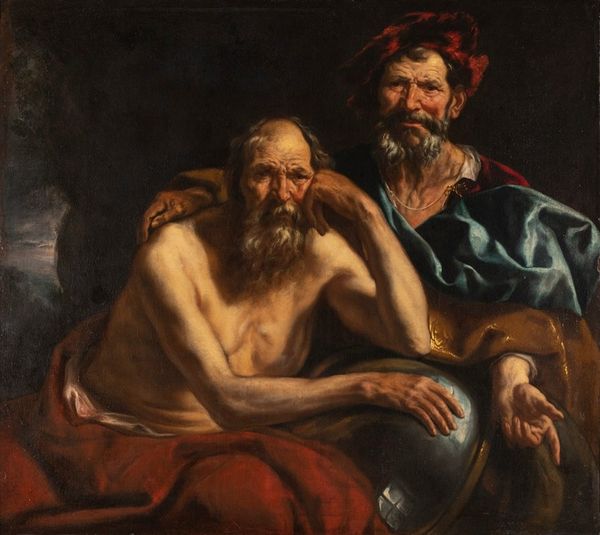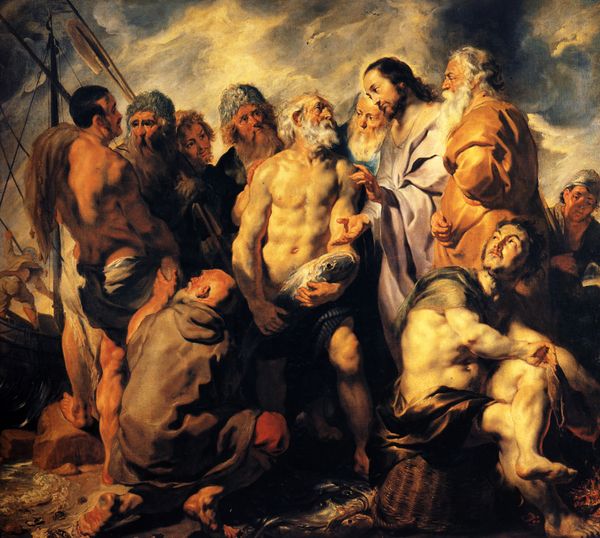
oil-paint
narrative-art
baroque
oil-paint
figuration
genre-painting
Dimensions: 33.75 x 55.5 cm
Copyright: Public domain
Curator: Georges de la Tour’s “The Beggars’ Brawl,” created around 1620 and currently residing at the Getty, depicts a chaotic moment rendered in oil on canvas. The scene is crowded. What immediately strikes you? Editor: Well, the energy is certainly high, almost frantic. There's this dynamic interplay between figures wielding instruments not as tools for music but…weapons? It definitely makes a statement on class struggles. The rendering of the garments seems crucial in that aspect. Curator: Indeed. The very materiality of their clothing—the roughspun textures, the evident wear—speaks volumes about their social position. La Tour often highlighted the social underbelly. It’s difficult to ignore the ways poverty renders individuals disposable, both then and now. Notice how light articulates each tattered piece. Editor: Yes, but beyond the sociopolitical message, the production is rather clever. The contrast between the light, hitting certain faces and fabrics, and the darkness—how deliberate and how it contributes to the overall rawness! The rendering, seemingly, has been made possible only because the artist cared about conveying that rough texture and dark environment through manual means. Curator: La Tour clearly wants us to think critically about societal hierarchies. Who holds the power, who is subjugated? Even the brawl itself suggests a breakdown of social order and hints at complex social structures. What philosophical lenses could clarify the complex interplay of the individual and the crowd here? Editor: Good point. Also, how did the craftsman prepare the surface to paint? We often assume that canvas paintings are made over canvas and oils, but the process involves many more complex variables of material manipulation which cannot be discounted here. Curator: Right, even the canvas’s weave contributes to the image's impact. Considering it as a product that relied on colonial routes of material transfer makes me reconsider my understanding of Baroque painting. These pieces have a lot to teach us. Editor: Absolutely. Looking beyond the surface of pigment, to see the raw materials and the physical work, lets us challenge our conventional views.
Comments
No comments
Be the first to comment and join the conversation on the ultimate creative platform.
